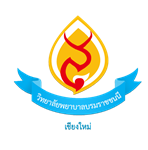ผลการจัดการเรียนรู้ผ่านห้องเรียนเสมือนจริงด้วยจักรวาลนฤมิตต่อผลสัมฤทธิ์ทางการเรียน วิชากายวิภาคศาสตร์และสรีรวิทยา ระบบย่อยอาหาร ของนักศึกษาผู้ช่วยพยาบาล
คำสำคัญ:
ห้องเรียนเสมือนจริงจักรวาลนฤมิต, กายวิภาคศาสตร์และสรีรวิทยา, นักศึกษาผู้ช่วยพยาบาลบทคัดย่อ
การวิจัยกึ่งทดลองแบบกลุ่มเดียววัดก่อนและหลังการทดลองนี้ มีวัตถุประสงค์เพื่อศึกษาผลการจัดการเรียนรู้ผ่านห้องเรียนเสมือนจริงด้วยจักรวาลนฤมิตต่อผลสัมฤทธิ์ทางการเรียน และความพึงพอใจต่อการจัดการเรียนรู้ผ่านห้องเรียนเสมือนจริงด้วยจักรวาลนฤมิต ในรายวิชากายวิภาคศาสตร์และสรีรวิทยา หัวข้อระบบย่อยอาหารของนักศึกษาผู้ช่วยพยาบาล กลุ่มตัวอย่าง คือ นักศึกษาผู้ช่วยพยาบาล จำนวน 71 คน ทำการคัดเลือกแบบเจาะจง เครื่องมือที่ใช้ในการดำเนินการวิจัย ได้แก่ ห้องเรียนเสมือนจริงจักรวาลนฤมิตรายวิชากายวิภาคศาสตร์และสรีรวิทยาของนักศึกษาผู้ช่วยพยาบาล หัวข้อระบบย่อยอาหาร ซึ่งพัฒนาตามแนวคิด ADDIE Model และเครื่องมือที่ใช้เก็บรวบรวมข้อมูล ได้แก่ แบบทดสอบก่อน-หลังเรียน และแบบประเมินความพึงพอใจในการจัดการเรียนรู้ผ่านห้องเรียนเสมือนจริงด้วยจักรวาลนฤมิต วิเคราะห์ข้อมูลโดยใช้สถิติเชิงพรรณนา และเปรียบเทียบผลสัมฤทธิ์ทางการเรียนก่อนและหลังเข้าร่วมการเรียนรู้โดยการทดสอบทีแบบไม่เป็นอิสระต่อกัน (Paired t-test)
ผลการศึกษา พบว่า กลุ่มตัวอย่างมีค่าเฉลี่ยผลสัมฤทธิ์ทางการเรียน หลังเข้าร่วมการจัดการเรียนรู้ผ่านห้องเรียนเสมือนจริงด้วยจักรวาลนฤมิต เท่ากับ 7.93 (S.D. = 1.59) สูงกว่าก่อนเข้าร่วมการจัดการเรียนรู้ ซึ่งมีค่าเฉลี่ยเท่ากับ 5.18 (S.D. = 1.39) อย่างมีนัยสำคัญทางสถิติ (p-value < 0.001) ความพึงพอใจต่อการใช้ห้องเรียนเสมือนจริงด้วยจักรวาลนฤมิต โดยรวมอยู่ในระดับดีมาก (Mean = 4.64, S.D. = 0.61) และเมื่อพิจารณารายด้าน พบว่าห้องเรียนเสมือนจริงด้วยจักรวาลนฤมิต ช่วยให้เข้าใจเนื้อหาเพิ่มมากขึ้น มีค่าคะแนนเฉลี่ยมากที่สุด (Mean = 4.70, S.D. = 0.52) จากการศึกษาแสดงให้ว่าการใช้ห้องเรียนเสมือนจริงด้วยจักรวาลนฤมิตช่วยพัฒนาความรู้กายวิภาคศาสตร์และสรีรวิทยาของนักศึกษาผู้ช่วยพยาบาลได้ และสามารถนำไปพัฒนาในรายวิชาอื่น ๆ เพื่อส่งเสริมผลสัมฤทธิ์ทางการเรียนให้ดียิ่งขึ้น
เอกสารอ้างอิง
ใจทิพย์ ณ สงขลา. (2561). การออกแบบการเรียนแนวดิจิทัล. กรุงเทพฯ: จุฬาลงกรณ์มหาวิทยาลัย.
ณัฐวรา จันทร์เอี่ยม และคณะ. (2562). ประสิทธิผลและความพึงพอใจในการเรียนรู้ด้วยตนเองผ่านสื่อการสอนเสมือนจริงในการดูแลแผลกดทับของนิสิตพยาบาลศาสตร์ มหาวิทยาลัยศรีนครินทรวิโรฒ. วารสารศรีนครินทรวิโรฒวิจัยและพัฒนา (สาขามนุษยศาสตร์และสังคมศาสตร์), 11(2), 45-56.
เปศล ชอบผล, งามนิตย์ รัตนานุกูล, นฤมล พรหมภิบาล, จิตรลดา สมประเสริฐ และนิติบดี ศุขเจริญ. (2563). การจัดการความรู้พยาบาลศาสตร์ด้วยเทคโนโลยีความเป็นจริงเสริมและห้องเรียนเสมือนจริง. วารสารเกษมบัณฑิต, 21(2), 193-210.
ยุภาวดี พรมเสถียร และธีรชัย เนตรถนอมศักดิ์. (2564). เทคโนโลยีสารสนเทศช่วยพัฒนาการเรียนการสอนได้จริงหรือไม่?. วารสารมหาวิทยาลัยขอนแก่น, 15(3), 1-13.
รัฐเดช เซ็ง. (2566). การพัฒนาห้องเรียนเสมือนจริงด้วยจักรวาลนฤมิตร่วมกับการจัดการเรียนรู้แบบสืบเสาะหาความรู้เพื่อส่งเสริมการเรียนรู้ฐานสมรรถนะทางเทคโนโลยี วิชาวิทยาการคำนวณ สำหรับนักเรียนระดับประถมศึกษาปีที่ 6 โรงเรียนพื้นที่นวัตกรรมการศึกษา. ครุศาสตรมหาบัณฑิตสาขาวิชาการสอนวิทยาศาสตร์ คณิตศาสตร์ และคอมพิวเตอร์. บัณฑิตวิทยาลัย มหาวิทยาลัยราชภัฏยะลา.
รัฐพล ประดับเวชย์. (2560). แนวทางการจัดกิจกรรมการเรียนรู้ด้วยเทคโนโลยีตามแนวคิดอนุกรมวิธานของบลูม. Veridian E-Journal, Silpakorn University, 10(3), 219-235.
สรินทร เชี่ยวโสธร, ญาดา นุ้ยเลิศ และสายสมร เฉลยกิตติ (2564) ผลของการจัดการเรียนรู้ด้วยสื่อเสมือนจริงของนักเรียนพยาบาลกองทัพบก ต่อทักษะการเรียนรู้ในศตวรรษที่ 21. วารสารวิทยาลัยพยาบาลพระจอมเกล้า จังหวัดเพชรบุรี, 4(3), 152-162.
Agrawal et al. (2016). Effectiveness of virtual classroom training in improving the knowledge and key maternal neonatal health skills of general nurse midwifery students in Bihar, India: A pre- and post-intervention study. Nurse Education Today, 36, 293-297. https://doi.org/10.1016/j.nedt.2015.07.022
Faul, F., Erdfelder, E., Lang, A. G., & Buchner, A. (2007). G*Power 3: A flexible statistical power analysis program for the social, behavioral, and biomedical sciences. Behavior Research Methods, 39(2), 175-191. https://doi.org/10.3758/bf03193146
Foronda, C. L., Fernandez-Burgos, M., Nadeau, C., Kelley, C. N., & Henry, M. N. (2020). Virtual simulation in nursing education: A systematic review spanning 1996 to 2018. Simulation in Healthcare: Journal of the Society for Simulation in Healthcare, 15(1), 46-54. https://doi.org/10.1097/SIH.0000000000000411
Ipsos. (2022). The virtual frontier: Gen Z and the metaverse. Nokia. Retrieved August 24, 2024 from https://www.ipsos.com/sites/default/files/ct/publication/documents/2022-09/nokia-the-virtual-frontier-gen-z-and-the-metaverse-2022_0.pdf.
Radianti, J., Majchrzak, T. A., Fromm, J., & Wohlgenannt, I. (2020). A systematic review of immersive virtual reality applications for higher education: Design elements, lessons learned, and research agenda. Computers & Education, 147, 103778. https://doi.org/10.1016/j.compedu.2019.103778.
Kurt, S. (2017). ADDIE model: Instructional design. Educational technology. Retrieved June 2, 2024 from https://educationaltechnology.net/the-addie-model-instructional-design/.
Min Kweon Ahn. (2022). The development and effects of metaverse-based core nursing skill contents of vital signs measurements and subcutaneous injections for nursing students. The Journal of Korean Academic Society of Nursing Education, 28(4), 378-388. https://doi.org/10.5977/jkasne.2022.28.4.378
O'Flaherty, J. A., & Laws, T. A. (2014). Nursing student's evaluation of a virtual classroom experience in support of their learning Bioscience. Nurse Education in Practice, 14(6), 654-659. https://doi.org/10.1016/j.nepr.2014.07.004
Pottle, J. (2019). Virtual reality and the transformation of medical education. Future Healthcare Journal, 6(3), 181-185. https://doi.org/10.7861/fhj.2019-0036
Tilghman, J., Doswell, J., Collington, D., Utili, S., & Watties-Daniels, S. (2018). Innovative utilization of augmented reality and simulation to promote nursing practice. Annals of Nursing and Primary Care, 1(1), 1008.

ดาวน์โหลด
เผยแพร่แล้ว
รูปแบบการอ้างอิง
ฉบับ
ประเภทบทความ
สัญญาอนุญาต
ลิขสิทธิ์ (c) 2024 วารสารวิจัยการพยาบาลและการสาธารณสุข

อนุญาตภายใต้เงื่อนไข Creative Commons Attribution-NonCommercial-NoDerivatives 4.0 International License.
1. บทความหรือข้อคิดเห็นใด ๆ ที่ปรากฏในวารสารวิจัยการพยาบาลและการสาธารณสุข ที่เป็นวรรณกรรมของผู้เขียน บรรณาธิการไม่จำเป็นต้องเห็นด้วย
2. บทความที่ได้รับการตีพิมพ์ถือเป็นลิขสิทธิ์ของ วารสารวิจัยการพยาบาลและการสาธารณสุข








